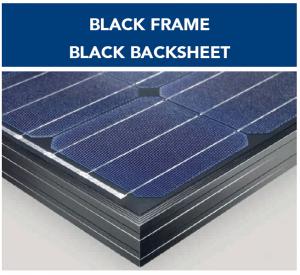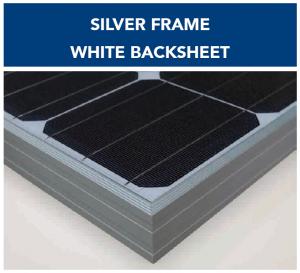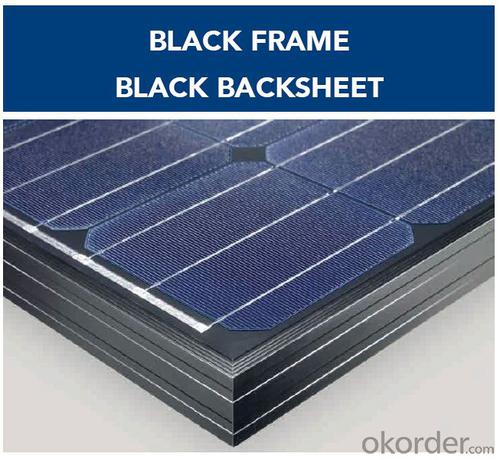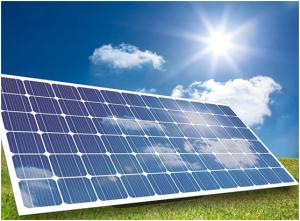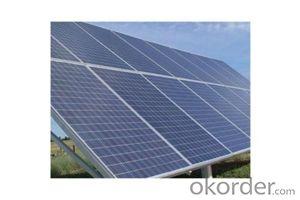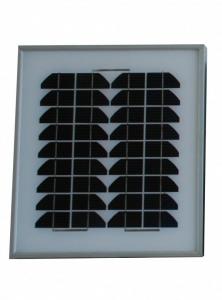Ecoflow Solar Panels 400w Yingli Solar Panda 60 Cell 40mm Series-II
- Loading Port:
- Tianjin
- Payment Terms:
- TT or LC
- Min Order Qty:
- 100 watt
- Supply Capability:
- 300000 watt/month
OKorder Service Pledge
OKorder Financial Service
You Might Also Like
ABOUT YINGLI GREEN ENERGY
Yingli Green Energy Holding Company Limited (NYSE: YGE) is one of the world’s largest fully vertically integrated PV manufacturers, which
markets its products under the brand “Yingli Solar“. With over 7.0GW of modules installed globally, we are a leading solar energy company
built upon proven product reliability and sustainable performance. We are the fi rst renewable energy company and the fi rst Chinese company to sponsor the FIFA World CupTM.
1. Structure of Yingli Solar Panda 60 Cell 40mm Series-II
Yingli Solar Panel Panda 60 Cell 40mm Series is one of the famous series of solar panel under YINGLI SOLAR brand for its outstanding high efficiency among the similar solar modules of other brands. Yingli solar PANDA is a new monocrystalline silicon module technology with n-type solar cells that have average efficiencies higher than 19.0%. Combined with high transmission glass, module efficiencies are up to 16.5%. Compared to traditional modules with p-type solar cells, PANDA modules have lower initial degradation and higher performance under both high temperature and low irradiation conditions. 40mm Series has different types according to panel power output: YL280C-30b/ YL275C-30b/ YL270C-30b/ YL265C-30b/ YL260C-30b.
2. Main Features of Yingli Solar Panda 60 Cell 40mm Series-II
- Robust, corrosion ressitant aluminum frames independently tested to withstand wind loads of up to 2.4k Pa and snow loads of up to 5.4kPa ensuring a stable mechanical life for your modules.
- Module packaging optimized to protect product during transportation and minimize on-site waste.
- Modules independently tested to ensure conformance with certification and regulatory standards.
- 10-year limnited product warranty.
- Manufacturing facility certified by TUV Rheinland to ISO 9001:2008, ISO 14001:2004 and BS OHSAS 18001:2007.
- Tight positive power tolerance of 0W to +5W ensures you receive modules at or above nameplate power and contributes to minimizing module mismatch losses leading to improved system yield.
3. Yingli Solar Panda 60 Cell 40mm Series-II Specification
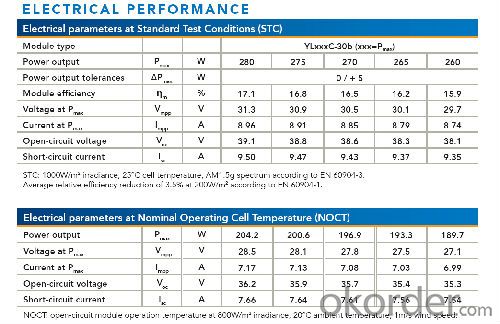
4. Yingli Solar Panda 60 Cell 40mm Series-II Images
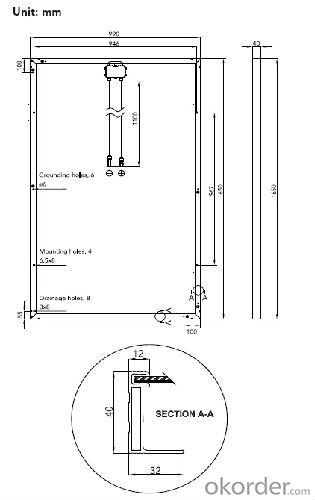
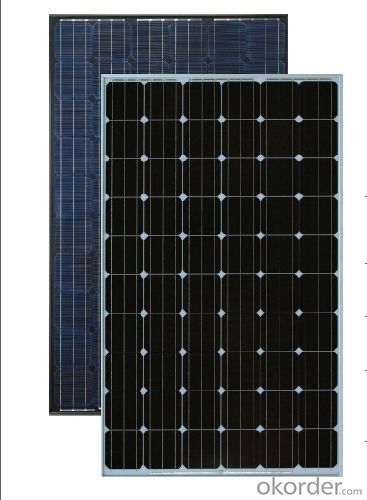
5. FAQ
Q1. What kind of power warranty can you offer?
Re: Limited power warranty: 1 year at 98% of the minimal rated power output, 10 yesars at 92% of the minimal rated power output, 25 years at 82% of the minimal rated power output.
Q2. Can the specification be used for longtime?
Re: Due to continuous innovation, research and product improvement, the specifications in this product information sheet are subject to change without prior notice. The specifications may deviate slightly and are not guaranteed.
- Q: I am searching for producers or distributors of solar panels. Thanks!
- There are ton's of distributor around that can provide you a cheap solar panel that didn't came from China. Expand your knowledge and learn from a renowned solar company about the Best Solar Panels. Visit our site and contact us today!
- Q: Hello, I have been trying to go green, I Have purchase somesolar panel they are about 45watts I been putting it against my window and getting ok power out of it enough for my lights and a couple of low watts gadget (cellphone, 2v light, portable dvd) for couple of hours.But its seem to drain the 2v faster then I can charge Am I getting the most power out of my panel?Or should I place it on the roof? I'm in Texas and it gets hot and sunny the sun beam my room windows pretty good during 4pm-6pm.
- outside is going to be much better. You can't tell but glass is actully opaque to many ranges of 'light'. If you look at advertising for windows you may see claims to reduce sun fading of your carpet/ furniture. That is because the glass blocks UV. Solar panels get some of their energy from UV light. Also some windows are engineered to block IR to help insulate better when the house is cooler than the outside. Again, solar panels get some of their energy from light in the infrared range. And finally if you're charging batteries the 'off angle time' is still important. The amount of light absorbed is pretty closely related to the cosine of the angle that the sun is 'off' of the direct. so when the sun is 45 degrees off of perpendicular the panels still get cos45 =.707 or about 70% of the available energy. (In practice it's a little less than that because not as much energy gets to the panel to be absorbed as at midday). But anyway, you can figure two hours of morning or late afternoon sun will give you as much energy as hour of midday sun. So if the panel is inside, you miss out on that available energy.
- Q: ) what is absolutely needed to hook up a solar panel to grid tie, what permits and/or inspectors are needed?2) if we know how many KWH's we use per month, do we just divide by number of hours per month to find out average KW usage?3) what is an estimated ratio of DC to AC transformation/convertion @ 30 C?4) do the solar panel voltages have to be the same? what would happen if the voltage going into the house is greater/lower than that of the house's defualt voltage5) for added chance of getting 0 pts add some contrators that do business in ohio for installing solar panels or sell them
- The okorder The reference section has all the formulas you are looking for and there is a list of dealers by state, plus various state rebate information. Yes, you can hook up different panels to the same system. There are special controllers that regulate the voltage. I'm more of a hands on nuts and bolts guy so I can't help you with the formulas and engineering explanations. Another great place to get information is Home Power Magazine. You can get the issues online or in print. Thanks for going solar!
- Q: i check the diodes in the backside of solar panels it reads out to be 0.433 each give me the same result but i was amazed when i check out the last two one which on clamp meter screen give me ''0L'' what this means? is that diode have malfunctions??is this reasons that the output of solar has been decreased?
- First of all, make sure that you are taking readings in the dark (with the solar panel indoors and covered). 0.433 is a reasonable forward voltage for a Schottky diode. Ideally, it diode should read open one way (possibly OL for your meter), and 0.4 the other way. If it's reading OL both ways, the diode is bad. You can either unsolder it or cut it out and verify that it is bad.
- Q: Can solar panels be used to power a university?
- Yes, solar panels can be used to power a university. Solar panels harness the energy from the sun and convert it into electricity, which can then be used to power various facilities and operations within a university campus. By installing a sufficient number of solar panels, universities can significantly reduce their reliance on traditional energy sources, lower their carbon footprint, and potentially save on energy costs in the long run.
- Q: I was wondering if they create other forms of energy besides electrical that is unwanted. Like heat due to the friction of something, or sound. Also why is a solar panel not able to collect 00% of the energy that is striking its panels. And how could the efficiency of this be hypothetically improved.
- Inability to generate electricity in the absence of light especially at nights or on a rainy day. secondly, it has an inability to store power.
- Q: who has solar panels on their home and are they worth it
- There are different kinds of solar panels. The biggest division is between photovoltaic panels that produce electricity and thermal solar panels that produce heat for hot water and space heating. Commercial photovoltaic panels are from 8 to 24% efficient while solar thermal panels are from 60 to 80% efficient. Solar thermal panels especially for hot water have a much higher ROI (return on investment) than photovoltaic panels. A solar hot water system may have a payback period (when savings equal the investment) as short as 3 to 5 years while photovoltaic panels will typically have a payback period between 7 and 5 years. Solar panels especially in times of low interest rates may be a very worthwhile investment with a better return than you can find almost anywhere else. But they are also highly dependent upon your situation. Owning a home with a good southern exposure is a prerequisite.
- Q: I have purchased a 2 volt LED lantern from argos, it comes with a built in 6 volt 4ah sealed acid battery. What I wanted to know is would I be able to charge it using my 6 volt solar panel?
- You okorder /... ] But I would suggest you contact . If you email, be prepared to provide more detailed specifications on your 6 volt solar panel and lantern data. You may just have to purchase a RECHARGEABLE 6V 4ah battery from them. Best of wishes.
- Q: Solar panels are expensive,can I make my own solar panel?
- no, not really, they require exotic chemicals and processes. The online outfits that promise to help you build your own are mostly scams. The one I looked at (other answer) seems to just be an assembly guide to put together solar cells into panels. That is fine, but you still have to buy the solar cells, the expensive part. The assembly is just putting them in series/parallel to produce higher voltages and currents. .
- Q: I just connected my 5 Watt 2V solar panel directly to my 300 Watt 2 inverter. It worked for about 2 minutes then it popped (sparks, smoke etc)! What the hell did I do wrong? I thought the solar panel was 2 volts? Can someone with experience with these things help me out?
- Those tiny inverters that plug into cigarette lighters are horrendously inefficient, as they assume you have the car's battery and alternator at their disposal. It's possible that the inverter itself needs 50 watts without even attaching a load at the output. Second, many 5-watt amorphous panels are too optimistically rated, and may only deliver 5 watts in the best sun. Given that, the inverter probably failed from undervoltage at the input. This is why there is always a battery connected. The idea is that the battery is charged over a long period of time by the panel, then discharged quickly by the inverter. The panel is probably fine. You can short the outputs, and generally nothing is harmed.
Send your message to us
Ecoflow Solar Panels 400w Yingli Solar Panda 60 Cell 40mm Series-II
- Loading Port:
- Tianjin
- Payment Terms:
- TT or LC
- Min Order Qty:
- 100 watt
- Supply Capability:
- 300000 watt/month
OKorder Service Pledge
OKorder Financial Service
Similar products
Hot products
Hot Searches
Related keywords
